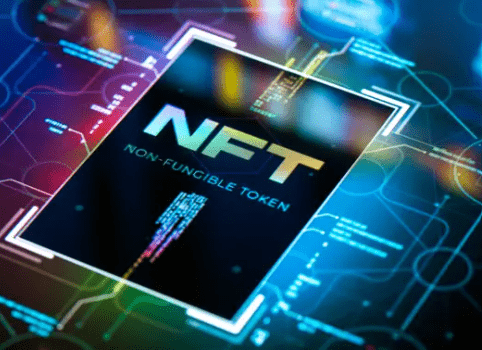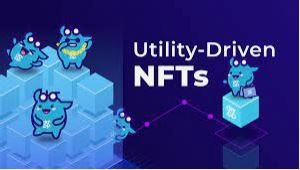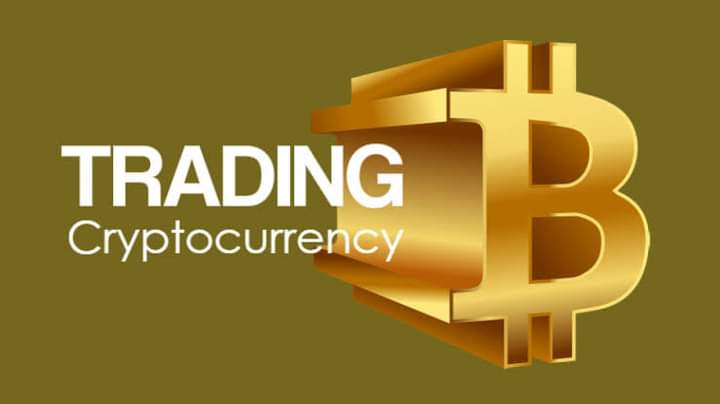NFT stands for non-fungible token. An NFT transforms a digital file into a digital asset. An NFT token is created and stored on a blockchain (usually Ethereum), serving as proof of ownership and provenance of a specific item. It works like a digital certificate of authenticity that can be easily verified by anyone anywhere in the world on a blockchain.
When it comes to the NFT space or NFT world, crypto collectibles or digital collectibles can represent various items including photographs, images, audio or music files, plain text files (documents, PDFs, or tweets), 3D models, online game items, virtual properties, virtual worlds, metaverses, web domain names, and other valuable assets.
A non-fungible token ensures that a digital work of art or any digital item or file is a unique token, collectible and tradable. Many consider them a revolution for the digital art market.
How do NFTs or non-fungible tokens work?
Non-fungible tokens or NFTs are executed by smart contract blockchains and specialized protocols. The most widely used smart contract blockchain for NFTs is Ethereum.
Ethereum has become the most widely used blockchain when it comes to minting NFTs. This is because the Ethereum blockchain supports a wide range of NFT token standards, including ERC-721, ERC-1155, ERC-809, ERC-994, ERC-1201, and ERC-998. The ERC-1155 standard for example allows the creation of fungible tokens and non-fungible tokens (NFTs).
Other platforms, blockchains, and smart contract protocols that also support the creation of NFTs are Flow, WAX, Tezos, and Binance Smart Chain.
When an NFT token is created it stores metadata about a digital file or a valuable item, the most common form is digital art.
The components or details of this NFT token metadata can include the artist or creator of the item, the description of the item, the price, the NFT creation date, the ownership of the item, specifications such as royalties, the transaction history of the asset, the new owner, and the location links of the file representing the NFT usually on the decentralized IPFS (Interplanetary File System) server.
Non-fungible tokens or NFTs are used for various purposes, usually, it serves as verifiable proof of unique digital items, but the main purpose is to create verifiable digital scarcity of digital items. But their main use is in digital art. They help to prove the authenticity and ownership of digital artworks.
What is a Non-Fungible Token (NFT)?
NFT stands for non-fungible token. An NFT transforms a digital file into a digital asset. An NFT token is created and stored on a blockchain (usually Ethereum), serving as proof of ownership and provenance of a specific item. It works like a digital certificate of authenticity that can be easily verified by anyone anywhere in the world on a blockchain.
When it comes to the NFT space or NFT world, crypto collectibles or digital collectibles can represent various items including photographs, images, audio or music files, plain text files (documents, PDFs, or tweets), 3D models, online game items, virtual properties, virtual worlds, metaverses, web domain names, and other valuable assets.
A non-fungible token ensures that a digital work of art or any digital item or file is a unique token, collectible and tradable. Many consider them a revolution for the digital art market.
How do NFTs or non-fungible tokens work?
Non-fungible tokens or NFTs are executed by smart contract blockchains and specialized protocols. The most widely used smart contract blockchain for NFTs is Ethereum.
Ethereum has become the most widely used blockchain when it comes to minting NFTs. This is because the Ethereum blockchain supports a wide range of NFT token standards, including ERC-721, ERC-1155, ERC-809, ERC-994, ERC-1201, and ERC-998. The ERC-1155 standard for example allows the creation of fungible tokens and non-fungible tokens (NFTs).
Other platforms, blockchains, and smart contract protocols that also support the creation of NFTs are; Flow, WAX, Tezos, and Binance Smart Chain.
When an NFT token is created it stores metadata about a digital file or a valuable item, the most common form is digital art.
The components or details of this NFT token metadata can include the artist or creator of the item, the description of the item, the price, the NFT creation date, the ownership of the item, specifications such as royalties, the transaction history of the asset, the new owner, and the location links of the file representing the NFT usually on the decentralized IPFS (Interplanetary File System) server.
Non-fungible tokens or NFTs are used for various purposes, usually, it serves as verifiable proof of unique digital items, but the main purpose is to create verifiable digital scarcity of digital items. But their main use is in digital art. They help to prove the authenticity and ownership of digital artworks.
What does it mean to mint NFT?
In simple terms, Minting NFT refers to the process of turning a digital file into a crypto collectible or digital asset on the Ethereum blockchain. The digital item or file is stored in this decentralized database or distributed ledger forever, and it is impossible to edit, modify, or delete it. As is the process of creating fiat coins, when a manufacturer mints a physical coin, the process of uploading a specific item onto the blockchain is known as “minting”.
Or we can define “NFT Minting” as the process by which your digital art or digital content becomes a part of the Ethereum blockchain. The NFT minting process is Similar to how metal coins are minted and put into circulation, non-fungible tokens are also “minted” after they are created. This process turns a simple file into a crypto asset easily traded or bought with cryptocurrencies on a digital marketplace without an intermediary.
During the minting process, the creator of the NFT can schedule royalties from every subsequent sale, which will be a commission he can receive whenever his work is sold to another person, or is traded on the secondary market.
How long does it take to mint an NFT?
It is difficult to estimate how long it might take during the process of minting NFTs. But most NFT platforms, tools, and NFT marketplaces make the NFT creation process easy.
By default, the process of creating an account or logging into the major NFT marketplaces is just to install a browser Chrome extension called Metamask, which is an Ethereum wallet.
Now, turning your digital content into NFT or uploading the file to the NFT marketplaces and listing it for sale, is similar to the process of uploading a video on YouTube, or uploading a music file on Spotify and is even similar to the process of listing a digital item or product for sale on Amazon, eBay or Etsy.
All you need is to upload the file (PNG, JPG, GIF, MP3, or MP4), assign a title and subtitle, add a description, set up royalties, and list it for sale.
Does minting an NFT cost money?
Yes. Most NFTs and NFT markets are stored and hosted using the smart contracts of the Ethereum blockchain.
Using the Ethereum blockchain (creating NFTs, buying, selling, or transferring an asset at an Ethereum address) has a cost, and that cost is called the “gas fee” or “Gwei”.
This fee typically costs between $50 and $200, depending on the demand of the Ethereum network or the NFT platform.
Can you mint an NFT for free?
You cannot mint an NFT for free. Currently, the largest NFT marketplaces are hosted on the Ethereum blockchain and the Binance Smart Chain protocol.
What you can do when minting or creating an NFT chooses a more affordable platform.
The most popular and most economical NFT marketplaces on the Ethereum blockchain are the OpenSea NFT, Rarible, and Mintable.
The most popular marketplaces on the Binance Smart Chain network are BakerySwap, Juggerworld, and Treasureland.
After selecting the platform and before you start minting NFTs, you will need a digital wallet or Ethereum wallet.
The most popular digital wallets are Metamask, Trust Wallet, Coinbase Wallet, and Rainbow.
When you create a wallet it generates a “seed phrase,” which is a string of 12 random words that allows you to access your funds in case you lose access or forget your wallet password.
A cryptocurrency wallet or digital wallet is composed of a ‘public wallet address’ and a ‘private key’. The ‘public wallet address’ is usually used to transfer any cryptocurrency or NFTs from one wallet to another, while the private keys or secret keys allow you to have control over your funds.
Another cryptocurrency wallet that is becoming popular and worth mentioning is Fortmatic/Magic, which allows the user to log in with an email address and password. The Fortmatic (Magic) wallet will create and store the “seed phrase” or “secret key” for you, securely and simply.
How much does it cost to mint an NFT on OpenSea?
OpenSea NFT is currently the first and largest NFT marketplace and is currently the most economical way to mint NFT tokens because it does not require users to pay transaction fees or gas fees every time they create other NFTs.
OpenSea NFT users only pay minting fees or gas fees once, at the time they create NFTs and customize their NFT collections. In the case of selling NFT, buyers offset gas fees.
When you mint your NFT on OpenSea, the token is automatically transferred to your crypto wallet (the default wallet is Metamask) and you can sell your NFT on multiple platforms i.e. you can create an NFT on OpenSea NFT and sell it on any platform or NFT market powered by the Ethereum blockchain.
How do I mint an NFT?
Any digital content or file can be turned into an NFT art or NFT asset.
So if you are a content creator, graphic designer, or digital artist you can easily turn your work, be it 3D models, text files (documents, PDFs, or tweets), videos, or music into a collectible crypto asset with real cash value.
The process is generally simple, if you are using the Google Chrome browser, you can easily install the browser extension “Metamask” – which is the default wallet of most NFT marketplaces and blockchain apps. But, ensure your wallet has Ether (ETH), the native cryptocurrency of the Ethereum blockchain. After that, you are ready to create your first NFT.
Here is the default of most major marketplaces and NFT platforms:
Connect your wallet to the NFT marketplace.
Your profile on any Ethereum-based NFT marketplace (OpenSea NFT, Rarible, Nifty Gateway, Foundation, or SuperRare) will be activated as soon as you connect your Metamask wallet, and from there you can create a username or display name, add a profile photo or cover photo of your collection, and add links to your social networks, personal blog, e-shop, or portfolio page.
Upload your file
The process of uploading your file or creating your NFTs is quite simple, just look for the “Create an NFT” page in your chosen marketplace, and from there you can upload images in PNG, JPG, or GIF formats, a music file in MP3 or. Wav formats, a video file in MP4 format, or a 3D file in GLB format.
Remember that an NFT is not the digital file or any digital content itself, but rather a representation of the file or content.
Given that the Ethereum blockchain will be able to store your NFT tokens for quite some time, you need to make sure that the file represented by an NFT is being well stored. It makes more sense to store the digital file in a decentralized database, such as an IPFS (InterPlanetary File System).
Using centralized databases, such as cloud hosting services, can be very risky for the security of your file. Using temporary cloud storage services like Google Drive or any other centralized database may not be a better long-term file storage solution appropriate for digital items turned into NFTs.
Mint your NFT
After uploading your file or your digital artwork, here you can add or assign a title and a description of the item, and then click the “Mint NFT” or “Is for sale” button, depending on the platform.
Approve Gas Fee or Transaction Fee
All transactions made on the Ethereum network have a cost, and this cost is paid with the Ether (ETH) cryptocurrency. Hence, at this stage, a gas or transaction fee will need to be approved in your digital wallet to complete the minting of the NFT.
Just to clarify one thing, gas fees are not fees created or charged by the NFT platform or marketplace you are using, they are paid for using the Ethereum blockchain.
Wait until your NFT is minted
After uploading the file and paying the gas fee, the NFT minting process is automatically started. During this process, the Ethereum smart contract executes a code that will be implemented in your artwork on the Ethereum blockchain.
Popular NFT marketplaces for minting and selling NFTs
OpenSea NFT
OpenSea NFT is currently the largest NFT ecosystem. You can find a wide range of NFTs from the ERC-721 and ERC-1155 standards, including art, virtual worlds, sports, metaverses, trading cards, and ENS domain names.
Metamask is OpenSea’s default wallet, and you can easily buy, sell, and trade NFT assets such as Decentraland, Axies (Axie Infinity), CryptoKitties, and more.
You can also easily create your own NFT using the OpenSea platform’s digital asset creation tool, such as adding a new item to your NFT collection for free. You can also sell your items by setting a fixed price, initial sale, or setting up an auction.
Categories: digital art, trading cards, sports, metaverses, collectibles, crypto collectibles, music, photography, games, etc.
Variable
Rarible is an NFT marketplace that focuses exclusively on unique digital assets. You can use this platform to “mint” new NFTs and sell your digital creations, be they music, digital art, virtual worlds, or movies.
At Rarible you can buy and sell NFTs in categories such as art, photography, games, metaverses, music, domains, memes, and more.
Categories: art, music, photography, DeFi, virtual worlds, Punks
KnownOrigin
KnownOrigin is a marketplace for digital artwork powered by the Ethereum blockchain. Here you upload your digital art in JPG or GIF formats, where the files are stored on IPFS (Interplanetary File System).
Category: digital art
Foundation
Foundation is a platform that focuses on the new creative economy of digital art. On this platform when someone resells your digital artwork, you can earn up to 10% on that side transaction.
Category: digital artworks
BakerySwap
BakerySwap is an NFT marketplace powered by the Binance Smart Chain blockchain and hosts digital art, and online gaming items. BAKE tokens are standard payment tokens of the platform. The process of minting and later selling NFT is simple.
Categories: digital art and online game items
SuperRare
SuperRare is an online marketplace that aims to be the largest NFT marketplace for digital art where people can buy and sell unique, 1/1 edition digital artworks. All transactions (minting, buying, and selling) are done using the Ether cryptocurrency (ETH).
Category: digital artworks
What happens after you sell your NFT?
When you create a new NFT, you are ensuring that the ownership of that artwork is recorded on the Ethereum blockchain, which is a distributed ledger or decentralized digital database that is completely transparent and makes it impossible to manipulate any stored data.
Each NFT has unique metadata that can be easily viewed on the distributed ledger for anyone anywhere in the world and in real-time to verify.
Once your NFT is minted, you can choose an initial selling price, program the royalties you wish to receive in commission whenever your work is sold, you can easily promote your creation on social media or your blog, or do a ‘drop’ – create a timed auction, and wait for bids for your NFT.
Once you list your NFT for sale and someone is interested in buying your artwork, they can bid on your work. If you accept the bid, the records will be publicly recorded, the NFT token will be transferred to the new owner, and the owner’s identity and the history or details of the trade will be recorded on the Ethereum blockchain.
How do I buy or trade NFTs?
Just like the token creator, you will also need a Cryptocurrency wallet (Metamask, Trust Wallet, or Coinbase Wallet) – then you add some Ether (ETH) to your wallet.
If you like sports, you can buy WePlay Collectibles. They are for people who want to be part of Esports events and show that they like players and talents differently, besides merchandising. The WePlay Collectibles are part of a platform, where you can buy items with NFT technology – both digital and physical. They are rewards and items associated with a specific tournament.
WePlay Collectibles also work through Ethereum. Buying unique digital art from WePlay Collectibles is easy, and you can do it through the Binance NFT marketplace. If you already have a Binance account, you can use it to buy and sell digital art in the marketplace. If you are not yet a Binance user, register today and open your digital wallet to hold cryptocurrencies, collect digital art, and more.
To buy NFTs, you will need to have ETH, BNB, or BUSD in your Binance wallet. After crediting your wallet with any of these cryptocurrencies, you can bid on any non-fungible tokens available on the Binance NFT marketplace.
Find the NFT you want, place your bid, and win the auction, and the token will be transferred directly to your wallet! With any of these cryptocurrencies, you can bid on any NFTs available in the Binance marketplace.
Now you can own unique digital items and keep, sell, or exchange them according to your taste.




